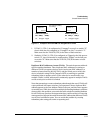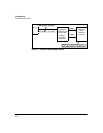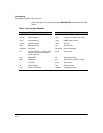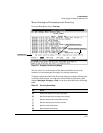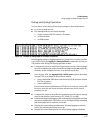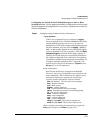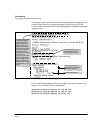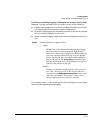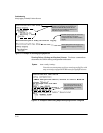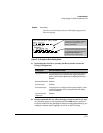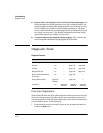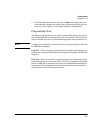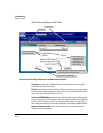
Troubleshooting
Using Logging To Identify Problem Sources
Configuring the Switch To Send Debug Messages to One or More
SyslogD Servers. Use the logging command to configure the switch to send
Syslog messages to a SyslogD server, or to remove a SyslogD server from the
switch configuration.
Syntax:
[no] logging < syslog-ip-address | facility < facility-name >>
< syslog-ip-address >
If there are no SyslogD servers configured, logging
enters a SyslogD server IP address and automatically
enables Syslog logging to the server. If at least one
SyslogD server is already configured and Syslog logging
has been disabled, you can still use logging < syslog-ip-
addr > to add another SyslogD server, but Syslog logging
remains disabled until you re-enable it with the debug
destination logging command. While Syslog logging is
enabled, the switch attempts to send Syslog messages to
all configured SyslogD server addresses, and operates
regardless of whether session logging is also enabled. To
configure multiple SyslogD servers, repeat the com-
mand once for each server IP address. (Default: none;
Range: Up to six IP addresses)
facility < facility-name >
Specifies the destination subsystem the SyslogD
server(s) must use. (All SyslogD servers must use the
same subsystem.) HP recommends the default (user)
subsystem unless your application specifically
requires another subsystem. Options include:
user (the default) - Various user-level messages
kern - Kernel messages
mail - Mail system
daemon - system daemons
auth - security/authorization messages
syslog - messages generated internally by Syslog
lpr - line printer subsystem
news - netnews subsystem
uucp - uucp subsystem
cron - cron/at subsystem
sys9 - cron/at subsystem
sys10 through sys14
- Reserved for system use
local0 through local7 - Reserved for system use
(Some switches covered by this manual do not offer the
facility option. Refer to the Note on page C-27.)
C-29



